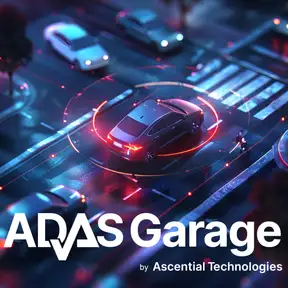Driving Down Costs, Driving Up Safety: The Economic Benefits of Universal ADAS Servicing
Download MP3The $34 Billion Payoff—The Net Economic Benefits of ADAS Calibration
This episode explores the core thesis that standardizing Advanced Driver Assistance Systems (ADAS) servicing is an economically sound investment, positioning proper calibration as the key to driving down costs while driving up safety.
We dive into the immense financial advantages of closing the "calibration gap," which currently results in substantial financial losses to consumers, insurers, automakers, service providers, and society as a whole.
The Net Economic Benefits of Universal ADAS Calibration:
- Macro-Economic Savings: If the deployment of properly calibrated ADAS leads to even a 10% reduction in crashes, that could save the economy $34 billion annually. By avoiding collisions, society avoids the cascade of financial burdens tied to crashes, from medical expenses to lost productivity.
- A Lucrative New Industry: Standardizing practices would help unlock the ADAS calibration service industry, which is projected to grow to $50 billion by 2030. This growth fuels workforce development in a high-skill sector.
- Insurance Cost Reduction: Proper ADAS functioning leads to double-digit decreases in insurance claims for collision, property damage, and bodily injury liability. This reduces insurer losses and helps cut legal defense fees, which can be significant. These reduced losses may eventually translate to lower premiums or discounts for consumers.
- Service Center Revenue: Calibration represents a significant new revenue opportunity for repair shops and dealerships. Calibration can be billed as a separate line item, potentially translating into thousands of dollars in daily revenue for service centers. Automakers also gain new revenue streams by selling certified calibration equipment and licensing software.
Implementing universal calibration standards is not just a technical necessity; it is a strategic imperative for a more cost-efficient and economically resilient transportation ecosystem.

